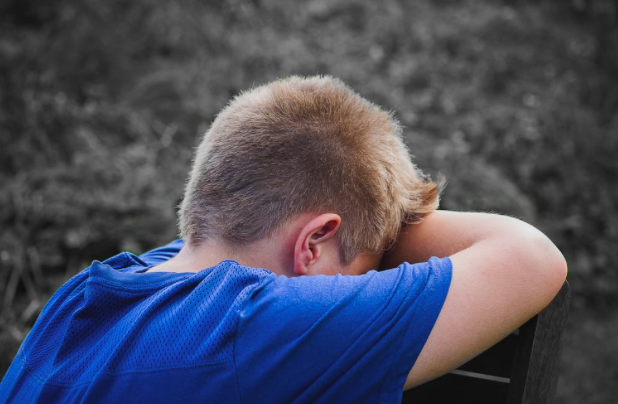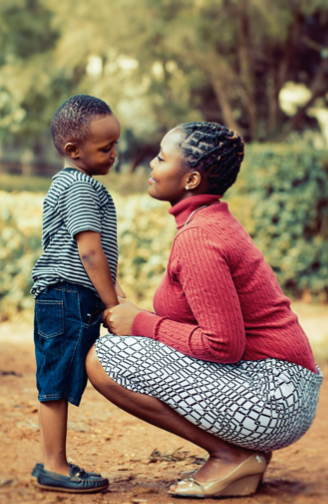THE STRUGGLE IS REAL!
Time and again, a parent, a caregiver, or a facilitator has to put up with the situation where a child’s behavior starts to pose a problem. It can be temper tantrums, aggression, whining, or just staying aloof to name a few. As a mom and childhood educator, I have witnessed this inevitable challenge in a child’s formative years. Building a positive relationship often seems like a mammoth task as we resort to a quick fix. However, an alternative to focusing on ‘Why’ a child is behaving in a particular manner, promises a win-win relationship that we all wish to acquire.

WORKSHOP LED BY NIKKOL ADAMS (MA,RCC):UNDERSTANDING CHILDREN’S BEHAVIOUR
Nikkol’s recent workshop on familiarizing with child behavior organized by the Here2Help Community answered many of the crucial ‘Whys’ in parenting and facilitating. It was a reminder and learning experience for the attendees to assess children from a rationale perspective and offer supporting strategies.
It’s Interesting how Nikkol demonstrated neuro activities behind the behavior through Daniel Seagul’s hand model that participants found intriguing. Once the brain’s mechanism was visualized, it was easier to relate to the context of children’s behavior.

- Reptilian Brain (The brainstem): Being the oldest part of the brain, it is responsible for basic motor and sensory functions as well as activating the fight, fright, freeze, and collapse/fall asleep responses.
- Limbic Region (The middle brain): Also known as the emotional part of the brain, it determines how we should react to a perceived threat in an environment. The different threats exposed to a child can be physical and emotional safety, the fear of the unknown: whether to fight or flee, and ‘unmet expectations’.
- Neocortex (The outer brain): The last part of the brain to develop, is responsible for logic/reasoning.
STRATEGIES FOR AN ADULT TO INCULCATE POSITIVITY IN CHILDREN’S BEHAVIOUR
A child’s communication in the early years is more directed towards behavior instead of words. The goals of a child’s behaviour can be attributed to attention, power, revenge and power of adequacy.
GOAL | CHILD’S BEHAVIOUR | CAREGIVER’S STRATEGY |
| Attention🔺 | Wants to be noticed e.g class clown or a teacher’s pet. The challenge is posed when a child seeks for negative attention. | The caregiver shouldn’t react to what can be ignored and rather focus on the positive aspects. Example: ‘i like the way you sit!’ |
| Power👑 | A child wants to be independent | Give choices to give sense of responsibility. Example ‘you want to brush your face first or teeth?” |
| Revenge ⚖ | feels the world has abandoned him/her. | Help develop a trusting and caring relationship and pro social skills so the child can mingle with the peers. |
| Power of inadequacy | The child feels he/she is good for nothing. | Help a child learn to trust him/herself. E.g. teaching to tie a shoelace and then allowing child to independently tie it. |
HOW YOU CAN SUPPORT A CHILD’S EMOTIONAL DEVELOPMENT?

Connection Vs Correction:
As caregiver, the foremost focus should be on connecting with the child, figuring out how to move forward, and later correcting in a manner that their autonomy and individuality are not at stake.
- Co-regulation/Coping skills: Here, the adult would firstly model the emotions personally and then support the child in learning to do it for themselves. For example, you see a child is irritated every time he/she is angry. You will model appropriately near the child and next time when the child is upset you can tell to squeeze a ball to feel better. The adult here resonates with the child and conveys it’s ok to be sad/angry but we have to move through it.
- Discipline and boundary setting: Discipline coupled with empathy should be the goal. A child does not always get to do what he/she wants. A tone should be ‘I care but there is a consequence to your action’. However, it should not be treated as a punishment. A child should know what rules are consistent and what rules are not, so the repetition of rules is pertinent in positive relationship building.
The reasoning and strategies discussed in the workshop work for most individuals. However, some children require additional needs and should consult with a mental health or behavioural specialized such as a behavioural consultant or a psychiatrist. To reach out to Nikkol Adams and learn about her contribution in clinical counseling and related fields, do check out http://www.essenceofself.ca/ .
Here2Help is a community tech organization focused on innovative solutions to ensure the growth of resilient communities generations into the future. Are you a community-minded individual interested in sharing your skills to help empower your community? We would love to hear from you to collaborate! Contact us if you’re interested in working with us or hosting a workshop on the Here2Help platform.
We are a registered not-for-profit run entirely through volunteer support. Any contribution goes a long way in helping us reach our goal of healing communities from within. Visit our Donate page to learn more about how your contribution can make a real difference.
Did you enjoy this article? Share it on social media to help us make a collective impact!
